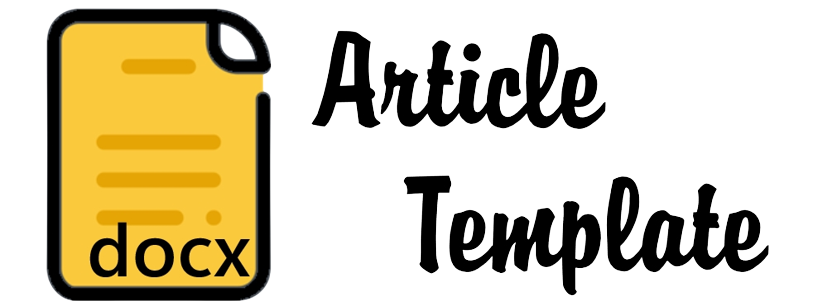Anecdotal Text Theme ‘Gulai Nangka’ According to Student Choice Using Google Classroom Media
DOI:
https://doi.org/10.55909/jpbs.v4i3.756Keywords:
anecdotal text appreciation, Gulai Nangk, students choice, google classroom mediaAbstract
This study aims to describe: 1) the central theme of the anecdote text ‘Gulai Nangka’ according to students’ choices using google classroom media; 2) supporting theme-1 of the anecdote text ‘Tangga Sakti’ according to students’ choices using google classroom media; 3) supporting theme-2 of the anecdote text ‘Tangga Sakti’ according to students’ choices using google classroom media. The study was conducted in the odd semester of 2024/2025 at the Indonesian Language and Literature Education Study Program, University of Riau. The population consisted of students in the 3rd semester of the 2024/2025 academic year who submitted the Google form. There were 88 students divided into three parallel classes. The sample was determined to be 73 students based on the Slavin formula. This number is divided into 25 students in class 2023A and 25 students in class 2023C. Data on the theme of the anecdote text ‘Gulai Nangka’ according to students’ choices were collected using a closed questionnaire in the electronic version of the Google using google classroom media. This questionnaire is valid because it is compiled using objective and systematic procedures. The data on the main themes of the anecdote text ‘Gulai Nangka’ according to students’ choices were analyzed using descriptive statistical procedures that focused on frequency, percentage, and mode. The results of the study: 1) the central theme of the anecdote text ‘Gulai Nangka’ according to students’ choices is that people always choose the best; 2) the supporting theme-1 of the anecdote text ‘Gulai Nangka’ according to students’ choices is that a good way of processing determines the deliciousness of a dish; 3) the supporting theme-2 of the anecdote text ‘Gulai Nangka’ according to students’ choices is the shifting of focus from good things to bad things.References
Andriyani, S. S. (2024). Amanat Teks Anekdot menurut Interpretasi Siswa dalam Pembelajaran Sekilas Menggunakan Bahan Ajar Sederhana. Jurnal Pembelajaran Bahasa dan Sastra, 3(3), 381–388. https://doi.org/10.55909/jpbs.v3i3.594
Azwar, S. (2012). Reliabilitas dan Validitas: Interpretasi dan Komputasi. Yogyakarta: Liberty.
Bandur, A. (2014). Penelitian Kualitatif: Metodologi, Desain, dan Teknik Analisis Data dengan NVIVO10. Jakarta: Mitra Wacana Media.
Budiaji, W. (2013). Skala Pengukuran dan Jumlah Responden Skala Likert. Jurnal Ilmu Pertanian dan Perikanan, Vol. 2, No. 2, Desember 2013, 127-133.
Creswell, J. W. (2014). Research Design: Pendekatan Kualitatif, Kuantitatif, dan Mixed. Penerjemah: Ahmad Fawaid. Editor: Saifudin Zuhri Qudsy. Yogyakarta: Pustaka Pelajar.
Elmustian, E., Rasdana, O., & Alfalah, A. (2024). Tema Utama Cerpen Profetik menurut Respon Mahasiswa Baru . Jurnal Pembelajaran Bahasa dan Sastra, 3(2), 203–212. https://doi.org/10.55909/jpbs.v3i2.576
Harahap, A. Z., & Nugroho, R. A. (2022). Amanat Utama Cerpen Faktual Profetik ‘Sengketa Bayi’ menurut Respon Siswa Kelas X dan XI . Jurnal Pembelajaran Bahasa Dan Sastra, 1(3), 321–332. https://doi.org/10.55909/jpbs.v1i3.49
Hilmi, H. S. & Sumiharti. (2022). Detil Cerita Humor Yong Dolah untuk Pemanfaatan Perencanaan Pembelajaran Teks Anekdot: Riset Keperpustakaan. Jurnal Pembelajaran Bahasa dan Sastra, Volume 1, Nomor 2, Maret 2022, 235-242. DOI: https://doi.org/10.55909/jpbs.v1i2.30
Juriati, & Razak, A. (2023). Tokoh, Tema, dan Amanat Cerita Rakyat ‘Wak Wang’ menurut Penilaian Siswa SMA Negeri 2 Senayang. GAUNG: Jurnal Ragam Budaya Gemilang, 1(2), 141–148. https://doi.org/10.55909/gj.v1i2.15
Juriati, & Fitrianingrum, E. (2022). Pesan Utama Cerpen Profetik menurut Interpretasi Siswa SMA Negeri 2 Senayang, Kabupaten Lingga. Jurnal Pembelajaran Bahasa dan Sastra, 1(5), 585–594. https://doi.org/10.55909/jpbs.v1i5.142
Kosasih, E. (2014). Jenis-Jenis Teks Dalam Mata Pelajaran Bahasa Indonesia SMA/MA/ SMK. Bandung: Yrama Widya.
Kosasih, E & Kurniawan, E. (2019). Jenis-Jenis Teks. Bandung: Yrama Widya
Mahsun. M. (2014). Teks dalam Pelajaran Bahasa Indonesia Kurikulum 2013. Jakarta: Raja Grafindo.
Elmustian, E.(2022). Teori Sastra. Pekanbaru: Labor Bahasa, Sastra, dan Jurnalistik, Universitas Riau
Razak, A. (2018). Statistika: Pengolahan Data Sosial Sistem Manual. Pekanbaru: Autografika.
Razak, A. (2020). Pendekatan Konstruktivisme dalam Pembelajaran Membaca Pemahaman. Pekanbaru: UR Press.
Razak, A. (2017). Menggapai Mixed Methods Bidang Pembelajaran Bahasa Indonesia. Edisi-1. Pekanbaru: Yayasan Pendidikan Raja Zulkarnain.
Razak, A., Yusuf, Y., & Tanjung, S. (2005). Celakanya Bibir: Kumpulan Humor Interaktif. Pekanbaru: Autografika.
Razak, A. (2022). Kapal Tanker: Kumpulan Humor Yong Dolah dan Analisis Singket. Pekanbaru: Yayasan Pendidikan Raja Zulkarnain.
Sari, T. H. (2023). Nilai Humor Teks Anekdot ‘Anak Anjing’ menurut Penilaian Siswa Kelas X. Jurnal Pembelajaran Bahasa dan Sastra, 2(5), 675–682. https://doi.org/10.55909/jpbs.v2i5.533
Setiawan, N. (2007). Penentuan Ukuran Sampel Memakai Rumus Slavin dan Tabel Krejcie-Morgan: Telaah Konsep dan Aplikasinya'. Makalah: Diskusi Ilmiah Jurusan Sosial Ekonomi Fakultas Peternakan Unpad, Kamis 22 November 2007, 1-10.
Sumiyadi & Durrachman, M. (2014). Sanggar Sastra: Pengalaman Artistik dan Estetik. Sastra. Bandung: Alfabeta.
Downloads
Published
How to Cite
Issue
Section
License
Copyright (c) 2025 Oki Rasdana, Imam Akhmad

This work is licensed under a Creative Commons Attribution-NonCommercial-ShareAlike 4.0 International License.







